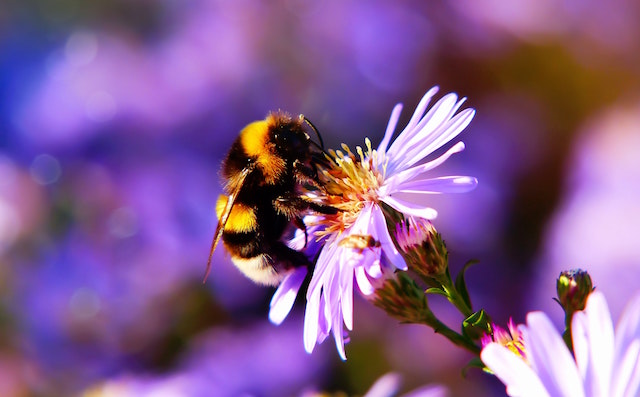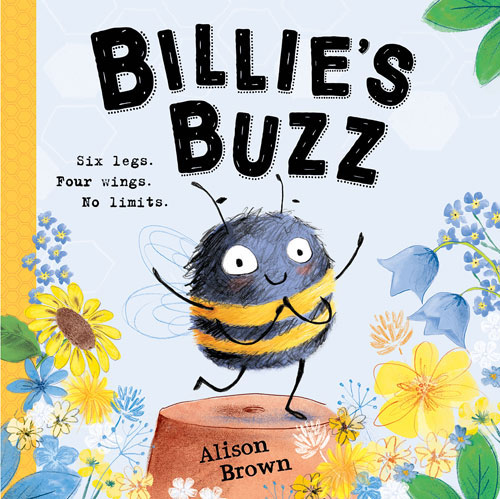
How you can help bees by urban-planting
The more our cities harbour natural plant life, the better our urban bee populations will fare – so even if you’ve only got a small garden, a balcony, a patio or a tiny pot on the window ledge you can make a real difference.
The best flowers you can plant for bees include:
- Purple flowers like lavender, buddleja and catmint, as bees can see purple more clearly than other colours
- Tubular-shaped flowers like foxgloves and snapdragons
- Herbs like thyme and rosemary Honeysuckle and clematis in the winter
- Bluebells, rhododendrons and forget-me-nots in the spring
- Delphiniums, foxgloves and hollyhocks in early summer
- Dahlias, cornflowers and ivy in late summer
- You can also help bees by planting certain fruits and vegetables like apples, pears, onions, peas, beans, courgettes and cucumbers.
Carolyn Dunster, specialist in city gardening and author of Urban Flowers, says, “Late planting for summer and autumn could include scented climbers such as honeysuckle and jasmine and ivy flowers are hugely attractive. It's not too late for annual and perennial flowers that bloom into October such as Verbena bonariensis, Nicotiana, Monarda and nasturtiums. Any brightly coloured, single-petalled flowers are good - check out plants for pollinators on the labels.”
How to identify and help a struggling bee
Bees are prone to cooling, a sudden shower or cold wind can catch them off guard. They normally will crawl to cover to "wait out" the hazard, returning to their task after a short rest.
Sean McMenemy, wildlife expert at Ark Wildlife, says, “It is always better to wait than intervene. Bees often take a rest or break and an inactive bee does not mean it is in difficulty. If a bee remains in the same place for longer than 30-45 minutes, it is likely to need help.
“Honey, brown sugar and artificial sweeteners should be avoided and never offered to bees. Commercially available honey may carry pathogens that could infect bees if it were fed to them.”
Here’s what Sean recommends:
- Is it in imminent danger i.e. could it get stepped on or hit? If so, safely move it to a quieter spot and leave it to rest.
- Is it in the rain? Move it to a sheltered spot.
- Is it on the underside of a flower or leaf? It’s likely to be taking a rest, so leave it in peace but come back in 30 minutes or so. If it’s been inactive for 35-45 minutes it may need help. Ideally move it on to nectar rich flowers in a sunny spot. Natural food and warmth is the best thing for it.
- If no sun / food is available you can move it to a warm spot (ideally outdoors, try to avoid taking them in houses) and offer it a little white sugar and water solution, just a few drops in front of it. Do not risk it falling in the solution as this may harm it.
What to do if a bee lands on you
“Bees are non-aggressive unless threatened, so it’s important to stay calm.” says Sean McMenemy. “A bee is slow-moving and has no intention of stinging you – it’s just trying to find its bearings or warm up in the sunshine. If it lands on your body or flat clothing, slowly walk to a sunny spot where you can place it in full sun on a plant, fence or table.
“If it lands on woolly clothes it may get tangled, so if this happens, just tuck a bit of paper or a leaf under its bottom. Bees are quite compliant with such actions and it then can’t sting you if it gets distressed. You can help by sliding the paper toward its head as it untangles each leg.”
How to help bees find a home
Even with a small outside space you can help create a home for bees, either by buying a ready-made cavity-nesting bee habitat or building one yourself using a wooden box, bamboo canes and hollow plant stems. Ensuring that your outdoor space has shady patches where bees can stay cool, and access to a water source, can also make a real difference.
Bee charities you can support Sean McMenemy says, “The Bumblebee Conservation Trust is an excellent UK charity whose mission is to increase the number and distribution of bumblebees. They work for a future where bumblebees are more numerous and valued in society”.
If you’re feeling inspired to help support bees ahead of Don’t Step on a Bee Day on 10 July, here are some charities you can donate to which do excellent work in conserving the bee population:
The Bee Friendly Trust are particularly focused on creating urban habitats for bees
The Wildlife Trusts are involved in a number of projects that protect bees
Give Bees a Chance aims to boost public awareness of the importance of bees

